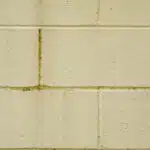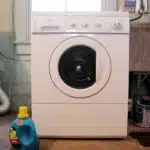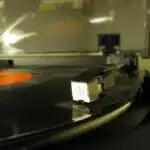In home improvement, it is common to encounter obstacles when attempting to tackle a project. One such challenge that homeowners often face is dealing with sticky painted shelves. The issue can be frustrating, leaving individuals feeling overwhelmed and unsure of how to proceed.
Fortunately, there are tips and tricks that can be utilized to successfully address this issue. By following these methods, individuals can ensure their shelves are clean and functional once again. This article will provide expert guidance on how to deal with sticky painted shelves effectively and efficiently, allowing homeowners to focus on other aspects of their renovation projects.
Understanding The Causes Of Sticky Painted Shelves
Sticky painted shelves are a common problem faced by homeowners. The stickiness can be attributed to several factors, including humidity and temperature changes, poor quality paint, improper application of the paint, and lack of ventilation. Humidity and temperature changes cause the paint to absorb moisture from the air, leading to stickiness. Poor quality paint may not dry properly and can remain sticky for an extended period.
Improper application of paint is another cause of stickiness on shelves. Applying too much paint or failing to allow sufficient drying time between coats can lead to tacky surfaces. Lack of ventilation during painting can also result in sticky shelves since the solvents in the paint do not evaporate correctly. Therefore, it is essential to ensure proper ventilation during painting.
Prevention measures can be taken to prevent sticky shelves from occurring in the first place. Proper preparation before painting is crucial. This includes cleaning and sanding the surface thoroughly before applying primer and paint. Additionally, high-quality paints should be used since they dry faster and have better bonding properties than lower-quality paints. Using a dehumidifier or air conditioner can also help maintain stable temperature and humidity levels while painting. By taking these preventative measures, you reduce the risk of ending up with sticky painted shelves that require fixing later on.
To prepare your work area for painting requires careful planning; hence it’s essential to follow specific guidelines to avoid potential problems that could arise from poor preparation techniques.
Preparing Your Work Area
Like a painter with a blank canvas, preparing a work area for a paint project is essential. The first step in any successful painting project is to organize all the supplies. Be sure to gather any necessary brushes, rollers, pans, and drop cloths before beginning your project. This will save time and frustration down the road.
Once you have organized your supplies, it’s time to set up your workspace. Make sure you have enough room to work comfortably and safely. Cover any nearby furniture or flooring that may accidentally come into contact with paint. It’s also important to have good ventilation in your workspace to ensure proper air circulation while painting.
A clean and organized workspace can make all the difference when dealing with sticky painted shelves. Not only will it prevent accidents and spills from happening but it will also allow you to focus on the task at hand without distraction. With all your supplies gathered and your workspace set up properly, it’s time to move onto gathering the necessary materials for removing sticky paint from shelves.
Gathering The Necessary Materials
- Sandpaper is essential for preparing a painted shelf for new paint, as it will help to create a smooth surface for the new layer of paint.
- When gathering cleaning supplies, be sure to use a non-abrasive cleaner to avoid damaging the shelf and causing any further damage.
- Primer should be applied to the shelf before painting to help the paint adhere better and create a longer-lasting finish.
- A brush with a thick bristles should be used for painting to ensure an even and professional finish.
- A drop cloth should be laid down to protect the surrounding area from paint spills and splatters.
- Masking tape should be used to cover any areas that will not be painted, such as nearby walls or fixtures.
Sandpaper
To effectively deal with sticky painted shelves, one of the necessary materials to have is sandpaper. Sanding can help remove the sticky residue on the surface of the shelves. However, not all sandpapers are created equal. Choosing the right type and grit level is crucial in achieving a smooth and even finish.
Wet sanding is a technique that uses water to lubricate the surface being sanded, resulting in a finer and smoother finish. This method is ideal for removing stickiness because it helps prevent dust particles from clogging up the sandpaper. When wet sanding, it’s important to use a fine-grit sandpaper, such as 400 or 600 grit, to avoid scratching the surface of the shelves.
When selecting sandpaper for dry sanding, choose a grit level that matches the condition of your shelves. Typically, start with a coarse grit of around 80 or 100 to remove any rough patches or bumps on the surface. Then move onto finer grit levels such as 220 or 320 to achieve a smoother finish. It’s crucial to use caution when using coarse-grit sandpapers as they can easily damage delicate surfaces.
In conclusion, choosing the right type and grit level of sandpaper is essential in dealing with sticky painted shelves effectively. Wet-sanding with fine-grit paper can provide an even smoother finish while dry-sanding with appropriate grit levels can help remove any rough patches or bumps on the surface without causing damage. Remember to exercise caution when using coarse-grit papers to prevent unwanted scratches.
Cleaning Supplies
To effectively deal with sticky painted shelves, it’s important to gather the necessary materials. While sandpaper is crucial for removing the sticky residue, cleaning supplies are equally important in achieving a clean and polished finish. The question is, which cleaning supplies work best for sticky paint?
Firstly, it’s essential to have a good quality detergent or all-purpose cleaner that can effectively remove any dirt or grime on the surface of the shelves. For stubborn stains or stickiness, a vinegar and water solution can do wonders. Mix equal parts of white vinegar and warm water in a spray bottle and apply it generously on the affected area. Let it sit for a few minutes before wiping it off with a clean cloth.
For those who prefer DIY solutions, making your own sticky paint remover is possible with simple household ingredients. Mix baking soda and water together to form a paste-like consistency and apply it onto the affected area. Leave it on for 10-15 minutes before scrubbing it off gently with a sponge or cloth. This method works well for small areas but may not be suitable for larger surfaces.
In conclusion, choosing the right cleaning supplies is crucial in dealing with sticky painted shelves effectively. A good quality detergent or all-purpose cleaner along with vinegar and baking soda can help remove stubborn stains and residue without damaging the surface of the shelves. With these tips in mind, tackling sticky paint should be a breeze!
Primer
When it comes to gathering the necessary materials for painting, primer is an essential item that should not be overlooked. Primer acts as a base coat that helps to prepare the surface for paint and improve its adhesion. It also helps to seal any cracks or imperfections in the surface, creating a smooth and even finish.
To choose the right primer, there are a few tips to keep in mind. Firstly, consider the type of surface you will be painting on. Different surfaces require different types of primers, such as wood, metal, or masonry. Secondly, consider your paint color and finish. Some primers are specifically designed for darker colors or gloss finishes, while others work well with all colors and finishes. Lastly, consider any special conditions or requirements for your project, such as high humidity or outdoor exposure.
Once you have chosen the right primer, it’s important to apply it evenly to achieve the best results. Start by cleaning and preparing the surface according to its specific requirements. Then, using a brush or roller, apply a thin coat of primer evenly across the entire surface. Avoid applying too much primer in one area as this can cause drips and uneven coverage. Allow the first coat to dry completely before applying additional coats if needed.
By choosing the right primer and applying it evenly, you can ensure that your painted surfaces look professional and last longer. Remember to follow these tips when gathering your materials for your next painting project!
Removing Items From The Shelves
After gathering the necessary materials, it’s time to start removing the items from the shelves. Before doing so, it’s important to consider any obstacles that may be in the way of accessing certain items. This could include furniture or other large objects that need to be moved out of the room temporarily. By removing these obstacles beforehand, you can save time and minimize damage to both your belongings and the painted shelves.
Once you’ve cleared a path for yourself, it’s time to start organizing items as you remove them from the shelves. Group similar objects together and label them if necessary to make it easier to put everything back in its place later on. This will also help maximize efficiency when cleaning and painting the shelves themselves.
As you’re removing items from the shelves, be sure to handle everything with care. This will not only minimize damage to your belongings but also prevent any accidents or injuries while working on the project. With these tips in mind, you can safely and efficiently clear off any loose debris before moving on to the next step of dealing with sticky painted shelves.
- Get rid of any broken or unusable items
- Take inventory of what you have and decide what needs to stay or go
- Clean each item as you remove it from the shelf
- Donate or sell unneeded items instead of throwing them away
By following these simple steps, you can not only improve your living space but also give back by donating gently used items to those in need. Now that we’ve removed all of our belongings from the sticky painted shelves, let’s move on to clearing off any loose debris before getting started on cleaning and prepping for paint.
Clearing Off Any Loose Debris
To ensure that your painted shelves remain in excellent condition, it is essential to keep them clean and free of debris. The first step in this process is to vacuum any loose debris that may have accumulated on the surface of the shelves. Debris such as dust, dirt, and pet hair can accumulate over time, causing the paint to become sticky.
Once you have vacuumed up any loose debris, it is important to wipe off any remaining dirt or grime. To do this effectively, use a soft cloth or sponge dampened with warm water. Wipe gently in circular motions, being careful not to scratch the surface of the paint.
Regularly cleaning your painted shelves will help prevent them from becoming sticky and difficult to use. In addition to vacuuming debris and wiping off dirt, using warm, soapy water to clean the shelves thoroughly will help remove any stubborn stains or residue. By taking these simple steps, you can ensure that your painted shelves remain in top condition for years to come.
Using Warm, Soapy Water To Clean The Shelves
One effective way to deal with sticky painted shelves is by cleaning them with warm, soapy water. This method is simple yet efficient, and it doesn’t require any harsh chemicals or expensive tools. All you need is a bucket of warm water, some dish soap, and a soft cloth.
To start, mix a small amount of dish soap into the warm water until it becomes soapy. Dip the soft cloth into the solution and wring out any excess water. Then, gently wipe down all areas of the sticky shelf with the soapy cloth. Make sure to pay extra attention to any particularly stubborn spots.
Once you’ve thoroughly cleaned all areas of the shelf with the soapy water, rinse off any remaining suds with clean water and let it air dry. For an even deeper clean, consider using a vinegar solution instead of just plain water. The benefits of vinegar solution are that it can help break down tough grime and disinfect surfaces naturally. When drying your newly cleaned shelves, make sure to use a microfiber cloth for best results.
Next up, we’ll discuss another effective method for tackling sticky painted shelves: scrubbing with a soft-bristled brush. This technique can be especially useful for getting rid of tough buildup in hard-to-reach corners or tight spaces.
Scrubbing With A Soft-Bristled Brush
As much as we try to keep our painted shelves clean, they can become sticky and difficult to manage. This can be a frustrating challenge to overcome, but luckily there are some effective solutions that can help. One of the best techniques is to scrub the shelves with a soft-bristled brush.
Using a soft-bristled brush is an excellent method for removing sticky residue from painted shelves. The gentle bristles will work to loosen any grime or debris without causing damage or scratches. To use this technique, simply dip your brush in warm water and begin scrubbing the affected area in a circular motion. Be sure not to apply too much pressure as this could cause damage to the paint.
If you find that the soft-bristled brush technique isn’t working for your sticky painted shelves, don’t worry! There are alternative cleaning methods that you can try. For example, you could mix equal parts water and vinegar together and use a cloth or sponge to wipe down the shelves. Alternatively, baking soda mixed with water can also be an effective cleaning solution. Apply the mixture onto your shelves using a cloth or sponge and gently scrub away any stickiness.
Once you have finished scrubbing your painted shelves with a soft-bristled brush or alternative cleaning method, it’s important to rinse them thoroughly with clean water. This will ensure that all residue has been removed from the surface of your shelves, leaving them looking shiny and new once again. With these tips in mind, you’ll be able to effectively clean your sticky painted shelves in no time!
Rinsing The Shelves Thoroughly
After scrubbing the painted shelves with a soft-bristled brush, it’s important to rinse them thoroughly. This step is crucial in ensuring that the shelves are clean and free from any residue that may cause stickiness. Rinsing the shelves also helps in preventing any damage to the paint or surface of the shelves.
Benefits of rinsing:
- Removes all soap residue: When you rinse your shelves properly, it ensures that no soap residue is left behind. This will prevent the accumulation of dirt and dust which can lead to sticky surfaces.
- Prevents damage to paint: Rinsing also prevents any damage to the paint on your shelves as it removes all soap residues that may harm the paint over time.
- Eliminates odors: Proper rinsing ensures that there are no odors left behind from cleaning agents, leaving your shelves smelling fresh.
Alternatives to rinsing: If water isn’t an option for rinsing your painted shelves, there are alternatives available:
- Use a damp cloth: You can use a damp cloth to wipe down your painted shelves after scrubbing. Make sure you wring out the excess moisture before wiping.
- Vinegar solution: Mix vinegar with warm water and use this solution to wipe down your painted shelves after scrubbing.
Once you have finished rinsing your painted shelves, it’s essential to dry them completely. Drying will prevent water spots from forming on the surface and stop any potential for mold growth. Take a clean towel or cloth and wipe down each shelf until it’s completely dry.
Transition Sentence: “Now that we’ve discussed how important it is to rinse your painted shelves thoroughly let’s move onto drying them completely.”
Drying The Shelves Completely
To prevent sticky shelves, it’s important to ensure that the paint is completely dry before placing anything on them. One way to speed up the drying process is by using a fan. Place the fan in front of the painted shelves and turn it on high for a few hours until the paint feels dry to the touch.
However, even with the use of a fan, it’s important to allow ample time for the shelves to dry completely. This may take several hours or even overnight depending on the humidity levels in your home. It’s best to err on the side of caution and wait until you’re sure that the paint is fully cured before using your newly painted shelves.
By taking these steps, you can prevent sticky painted shelves and ensure that they remain looking fresh and new for years to come. In the next section, we’ll discuss how to gently sand any rough patches or imperfections that may have occurred during the painting process.
Sanding The Shelves Gently
After making sure that the shelves are completely dry, the next step is to sand them gently. Sanding will help remove any bumps and rough edges from the paint that may have caused it to stick. It also creates a surface that will be more receptive to primer and additional coats of paint.
Choosing the right sandpaper is crucial in ensuring that you do not cause any further damage to your shelves. Start with 120-grit sandpaper and then move up to 180-grit for a smoother finish. Avoid using anything coarser than 120-grit as it can leave scratches on your shelves, which can be difficult to remove.
When sanding your painted shelves, it’s important to avoid damaging the paintwork. Make sure you are using light pressure when sanding and always move in the direction of the wood grain. Sanding too hard or in a circular motion may create uneven patches on your shelves, leading to an unsightly finish. By following these tips, you can ensure that your shelves will look as good as new once they are painted again.
To complete this project, applying a primer will be essential before adding another layer of paint. The primer acts as a foundation for your new coat of paint, allowing it to adhere better and last longer. In the next section, we’ll discuss how to apply primer effectively so that you can achieve a professional-looking finish on your newly sanded shelves.
Applying A Primer
To effectively deal with sticky painted shelves, applying a primer is an essential step towards restoring their functionality. A primer can help to create a smooth surface for the paint to adhere to, ensuring that it bonds well and does not peel off easily. When it comes to choosing the right primer, there are several factors to consider.
Firstly, you need to ensure that the primer is compatible with the type of paint you will be using. This means that if you will be using oil-based paint, then your primer should also be oil-based. Additionally, consider the surface you will be painting on as some primers may work better on certain surfaces than others. For example, if your shelves are made of wood or metal, choose a primer that works well on such materials.
Once you have chosen the right primer for your shelves, it’s time to apply it evenly. Start by cleaning the shelves thoroughly and letting them dry completely before applying the primer. Use a brush or roller to apply an even coat of primer over the entire surface of each shelf. Avoid leaving any areas unprimed as this could lead to unevenness in the final coat of paint.
In summary, applying a suitable primer is key when dealing with sticky painted shelves. Choosing the right one involves considering factors such as compatibility with your chosen paint and suitability for your surface material. Ensure that you apply the primer evenly over all surfaces before proceeding with adding a fresh coat of paint.
Adding A Fresh Coat Of Paint
- Preparing the shelf prior to painting is crucial to ensure the paint adheres properly and the shelf remains durable.
- Paint can be applied with a brush or a roller, and the choice of tool depends on the surface texture of the shelf.
- To ensure uniform paint coverage, it is important to apply several thin layers of paint instead of one thick layer.
- Once all layers are applied, let the paint dry for the recommended time period before handling the shelf.
- To prevent the paint from sticking, apply a coat of sealant over the freshly painted surface.
- To complete the project, add any additional decorative elements such as stenciling, trim, or hardware to the shelf.
Preparing The Shelf
When it comes to adding a fresh coat of paint to your shelves, surface preparation is crucial. You want to ensure that the paint adheres properly and doesn’t peel or flake off. This means taking the time to properly clean and prepare the surface before you begin painting.
First, start by removing any items from the shelves and wiping them down with a dry cloth. Next, use a damp cloth or sponge to gently clean the surface of the shelves. If there are any stubborn stains or sticky residue left behind, you may need to use a cleaning solution such as vinegar and water or a mild soap and water mixture.
Once you have thoroughly cleaned the shelves, allow them to dry completely before beginning any painting. Any moisture left behind can cause issues with adhesion and lead to unsightly peeling or bubbling once your paint has dried. By taking these simple steps for surface preparation and cleaning techniques beforehand, you can help ensure that your freshly painted shelves look great for years to come.
Applying Paint
Now that you have properly cleaned and prepared the surface of your shelves, it’s time to start applying paint. Choosing the right paint can make all the difference in achieving a professional-looking finish. Look for a high-quality paint that is specifically designed for use on wood or other surfaces similar to your shelves. It’s also important to choose a color that complements the room’s décor.
Before you begin painting, be sure to avoid common mistakes such as using too much paint or failing to apply it evenly. Start by using a brush or roller to apply a thin coat of paint, working in small sections at a time. Be sure to smooth out any drips or bubbles as you go along. Once the first coat has dried completely, you may need to apply additional coats until you achieve the desired look.
To ensure that your freshly painted shelves look great for years to come, it’s important to take proper care during and after the painting process. Allow each coat of paint ample time to dry before adding additional layers or placing items back onto your shelves. Be sure to clean up any spills or drips immediately with a damp cloth. By following these simple tips and techniques, you can add a fresh coat of paint to your shelves with ease and confidence.
Finishing Touches
Once you have successfully applied a fresh coat of paint on your DIY shelving, the next step is to add some finishing touches. These final touches will not only enhance the overall appearance of your shelves but also make them more functional and efficient as storage solutions.
One important finishing touch is to add shelf liners. Shelf liners protect the surface of your shelves from scratches and spills, making them easier to clean and maintain. There are various types of shelf liners available, including adhesive-backed vinyl, non-adhesive grip liners, and decorative paper liners.
Additionally, consider adding some organizational tools such as bins, baskets, or dividers to maximize your shelf space. These tools can help keep items in place and prevent clutter from accumulating on your newly painted shelves. With these small touches, you can transform your ordinary DIY shelving into an organized and aesthetically pleasing storage solution that will serve you for years to come.
In conclusion, adding a fresh coat of paint on your DIY shelving is just the first step towards creating a functional and visually appealing storage solution. By incorporating simple finishing touches such as shelf liners or organizational tools, you can take your shelves to the next level in terms of both style and functionality. So go ahead and give your shelves the attention they deserve with these easy-to-follow tips!
Allowing The Shelves To Dry Completely
After adding a fresh coat of paint to your shelves, it is important to allow them to dry completely before using them. Rushing this process can result in sticky shelves that ruin the items placed on them. Patience is key when dealing with freshly painted surfaces.
One alternative drying method is to use a fan or open windows to increase air circulation in the room. This will help the paint dry faster and prevent any stickiness from occurring. Another option is to use a hairdryer on low heat setting, holding it about 6 inches away from the shelves and moving it back and forth until they are completely dry.
It is important not to rush this process by placing items on the shelves too soon. Doing so can cause smudges or even peel off some of the paint, ruining all your hard work. Instead, wait at least 24 hours before replacing any items on the shelves. This will ensure that the paint has had enough time to dry and cure properly.
- Be patient and allow for at least 24 hours for the shelves to dry completely.
- Increase air circulation in the room using a fan or by opening windows.
- Use a hairdryer on low heat setting as an alternative drying method.
- Wait before replacing any items on the shelves, ensuring that they have had enough time to dry and cure properly.
By taking these precautions and allowing your freshly painted shelves ample time to dry, you can avoid sticky surfaces that damage your belongings. Remember, patience is key when dealing with home improvement projects such as this one. With these tips in mind, you can enjoy beautifully painted shelves that enhance the overall look of your living space without worrying about damaging your belongings.
Replacing Items On The Shelves
Now that you have successfully dealt with your sticky painted shelves, it’s time to put everything back on them. Before you do so, consider an organizing strategy that will make your life easier in the long run. One option is to group items by category, such as all baking supplies together or all cleaning products in one area. This not only makes it easier to find what you need but also helps keep clutter at bay.
Another option for replacing items on your shelves is to incorporate decorative options that add a personal touch to your space. Consider using baskets or bins for storing smaller items or adding decorative shelf liners for a pop of color or pattern. These simple additions can turn a mundane storage space into a visually appealing part of your home.
Remember, maintaining the cleanliness of your shelves is just as important as putting things back in an organized and decorative manner. Regularly dusting and wiping down your shelves will prevent future stickiness and keep everything looking fresh and tidy. With these tips in mind, you can enjoy a well-organized and visually pleasing storage space for years to come.
Maintaining The Cleanliness Of Your Shelves
Proper shelf organization is essential to maintain the cleanliness of your shelves. When you organize your shelves, you avoid placing items that are prone to sticky messes on them. If you need to store items that could create a mess, it’s best to keep them in containers or use liners on the shelves.
Using the right cleaning products can make all the difference when it comes to maintaining clean and sticky-free shelves. Avoid using harsh chemicals that can damage painted surfaces or leave behind residue. Instead, opt for gentle cleaners like water and vinegar solutions or mild dish soap. Be sure to follow the manufacturer’s instructions when using any cleaning product.
Regular cleaning is key to maintaining a neat and tidy home. Make it a part of your routine to dust and wipe down your shelves at least once a week. This will help prevent any buildup of dirt or grime that could lead to sticky shelves in the future. By taking these simple steps, you’ll ensure that your shelves remain clean and organized for years to come.
- Use liners or containers for items prone to creating messes.
- Avoid harsh chemicals when cleaning painted surfaces.
- Develop a regular cleaning routine for your shelves.
Remember, shelf organization and cleanliness go hand in hand. By following these tips, you’ll be able to keep your shelves free from stickiness and clutter. Incorporating these habits into your daily life will not only benefit yourself but also anyone else who may use the space as well!
Conclusion
When dealing with sticky painted shelves, it is important to understand the root cause of the problem in order to effectively address it. Once you have identified the issue, it is crucial to prepare your work area and gather the necessary materials before removing items from the shelves. Clearing off any loose debris and adding a fresh coat of paint can help restore your shelves to their former glory.
Allowing ample time for the shelves to dry completely is essential before replacing items on them. It is also important to maintain their cleanliness in order to prevent future stickiness. Remember, as the old adage goes, “a stitch in time saves nine.” By taking proactive measures, you can keep your painted shelves looking clean and functional for years to come. As a home improvement expert, I recommend staying on top of maintenance tasks and addressing issues promptly in order to avoid costly and time-consuming repairs down the line.
Image Credits
- “shelves + painting” by Pleuntje (featured)





























